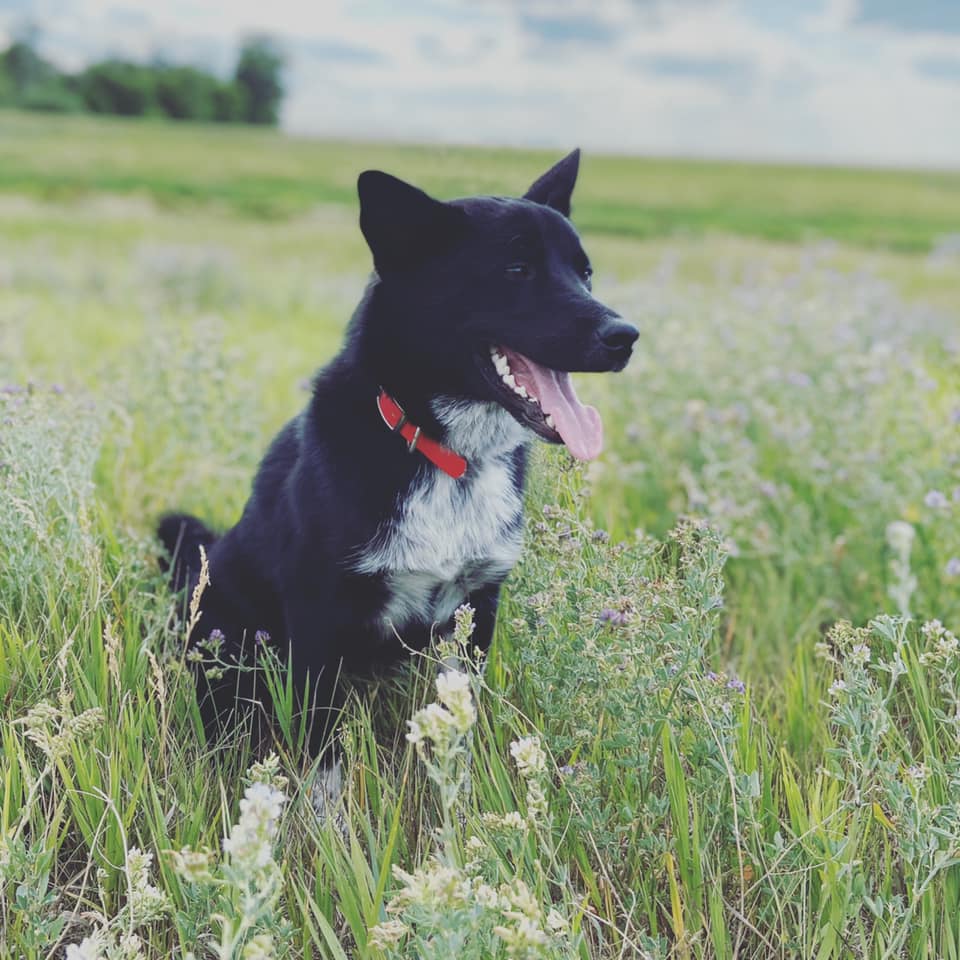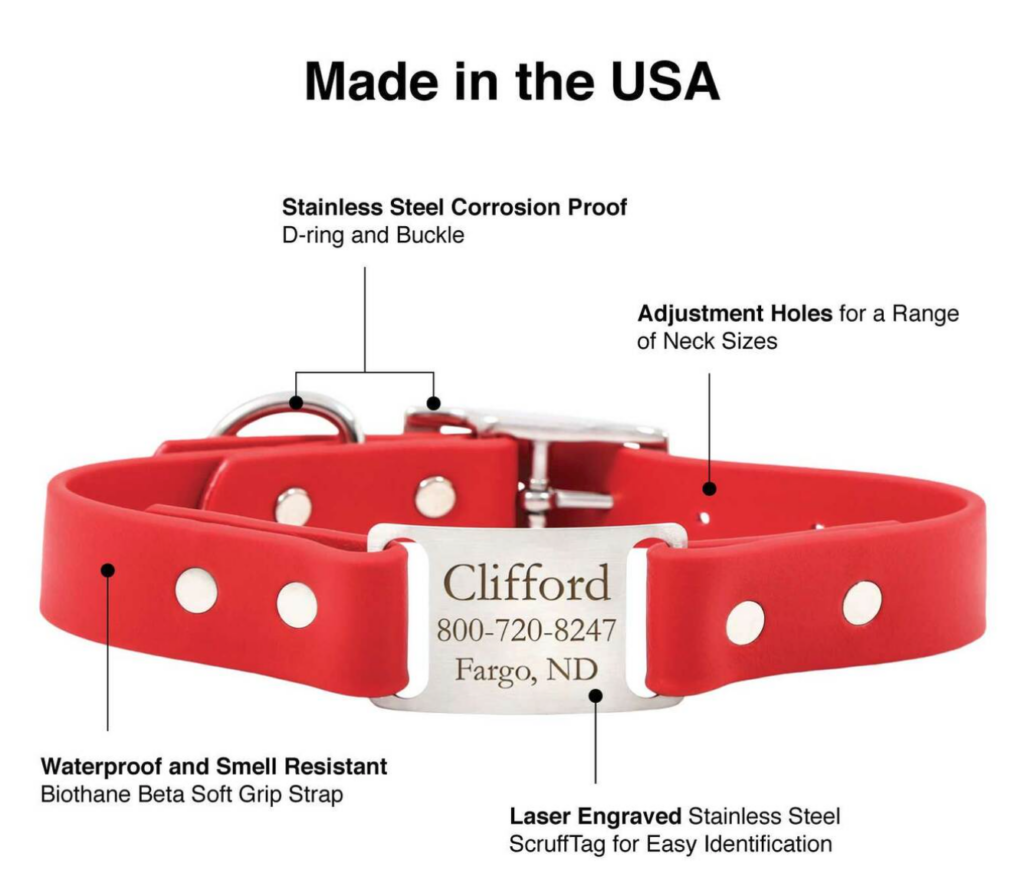January is National Train Your Dog Month

Did you know that January is National Train Your Dog Month? With that said, have you wondered if you should bring your dog to a class? Let me tell you from now having my puppy, Wes, for a year, it’s worth it.

Look at how cute he is!
Puppy 101 Training
I adopted Wes at three months old and it was the middle of winter and I lived on the third floor of an apartment so potty training was not fun. Between getting up in the middle of the night to teaching him right from wrong, puppy training was rough. After a week of having him I enrolled him into a Puppy 101 Training Course that was six weeks long and once a week. From learning his name, sitting, laying down, practicing leash walking, to “leave it!” I was so thrilled by the new things he was learning as well as my husband and I! That’s another thing, if there are more than one puppy parent you should all attend the class. That way you’re both learning the same commands for your pup and it won’t confuse him. For example, if one says “Off” when he jumps and the other says “Down”. Which, I’d recommend saying “Off”, so he doesn’t confuse “Down” with “Lay Down”.
After our first six weeks we moved into the second puppy training course that was another six weeks long and that covered training using praise vs a lot of treats. Aside from learning commands, this was our opportunity to also get Wes to play nice with other dogs. Being winter, we weren’t spending too much time outside so being able to see other pups once a week was worth it in itself. I learned Wes was a little rough when playing so the trainer showed us techniques when he was being a bit of a bully when playing with other dogs or even with people.

Whether it’s your first dog or your third, each one has their own personality and it’s great to get them to socialize right away and learn good behaviors early. Not that you have to start young, you can always teach an old dog new tricks as well. There are different levels of training to suit the needs of dogs in different stages of their life. Wes being my first pup, I recognized appropriate responses even as a pet parent. Such as always keeping Wes leashed in public spaces and asking to pet a dog and not being offended if they tell me no. Each dog is different and it’s best to acknowledge that they aren’t the same as yours.
Looking for a new collar?
If you're checking out the red collar Wes is wearing in the picture above, let me tell you where to find it. At dogIDs of course! Get the Waterproof ScruffTag Dog Collar if your pup likes to get messy on walks and the collar makes sure their tag stays in place.
Advanced Training Techniques
Once you and your dog have mastered the basics in Puppy 101 and the follow-up courses, you might be interested in exploring more advanced training techniques. These can help your dog develop higher-level skills and can also be a lot of fun for both of you.
One such technique is agility training. This involves teaching your dog to navigate a series of obstacles, such as tunnels, jumps, and weave poles. Agility training is great for high-energy dogs as it provides both physical exercise and mental stimulation. Not only does this activity strengthen your dog's obedience and coordination, but it also enhances the bond between you and your furry friend.
Another advanced training option is scent work. Dogs have an incredible sense of smell, and scent work training taps into this natural ability. This type of training involves teaching your dog to locate specific scents, which can be useful for search and rescue missions or just as a fun game to play at home. Scent work can be particularly beneficial for older dogs or those with physical limitations, as it provides mental exercise without requiring intense physical activity.
Trick training is another excellent way to keep your dog engaged. Once your dog has a solid foundation of basic commands, you can teach them fun tricks like rolling over, playing dead, or even fetching specific items. Trick training can be a great way to show off your dog's skills and can be a fun party trick when you have guests.
The Importance of Consistency in Training
Regardless of the level of training, consistency is key. Dogs learn best through repetition and reinforcement, so it's important to maintain a consistent training schedule. This means practicing commands and skills regularly and being consistent with the cues and rewards you use.
Consistency also extends to all members of the household. If everyone uses the same commands and follows the same training principles, your dog will learn more quickly and be less likely to become confused. This unified approach is particularly important in multi-person households, where different family members might interact with the dog throughout the day.
Benefits of Professional Training Classes
While it's possible to train your dog at home, professional training classes offer numerous benefits that can enhance your training experience. Professional trainers bring a wealth of knowledge and experience, which can be particularly valuable if you're encountering specific behavioral issues or if you're new to dog training.
In a class setting, your dog also has the opportunity to socialize with other dogs. This is crucial for their development, as it helps them learn how to interact appropriately with other animals. Socialization in a controlled environment can prevent behavioral problems such as aggression or fearfulness around other dogs.
Additionally, professional trainers can provide you with personalized feedback and guidance. They can identify any mistakes you're making and offer solutions to improve your training techniques. This tailored advice can accelerate your dog's learning and help you achieve better results more quickly.
Training Tools and Accessories
Having the right tools and accessories can make a significant difference in your training efforts. For example, a high-quality leash and collar are essential for teaching commands and ensuring your dog's safety. The Waterproof ScruffTag Dog Collar from dogIDs is an excellent choice, especially if your dog loves to get messy on walks.
Treats are a crucial part of positive reinforcement training. Keeping a supply of your dog's favorite treats on hand can help motivate them and make training sessions more effective. Additionally, a treat pouch can be a convenient accessory, allowing you to keep treats easily accessible during training.
Training clickers are another useful tool. Clickers provide a distinct sound that can be used to mark desired behaviors, making it easier for your dog to understand what you're asking them to do. Over time, your dog will associate the clicker sound with a reward, which can enhance their learning process.
Overcoming Training Challenges
Training a dog is not always a smooth process, and you may encounter various challenges along the way. One common issue is a lack of focus, particularly in young or high-energy dogs. In such cases, short, frequent training sessions can be more effective than longer, less frequent ones. Keeping sessions engaging and varied can also help maintain your dog's attention.
Another challenge is dealing with stubborn behavior. Some dogs may resist certain commands or behaviors, requiring extra patience and persistence. It's important to stay calm and avoid punishment, as this can lead to fear and mistrust. Instead, focus on positive reinforcement and gradually build up to the desired behavior.
If you encounter specific behavioral issues, such as aggression or anxiety, seeking the help of a professional trainer or behaviorist can be beneficial. These experts can provide specialized guidance and develop a tailored training plan to address your dog's unique needs.
Training as a Lifelong Journey
Training doesn't end once your dog has mastered the basics. It should be viewed as a lifelong journey, with opportunities for continued learning and enrichment. Regular training sessions can keep your dog mentally stimulated and prevent boredom-related behaviors.
As your dog ages, their training needs may change. Older dogs may benefit from low-impact activities like scent work or gentle obedience exercises. Keeping their minds active can contribute to their overall well-being and quality of life.
Enhancing Training with Proper Identification
While training your dog, ensuring they have proper identification is crucial for their safety. A reliable dog ID tag can make a significant difference if your dog ever gets lost. At dogIDs, we offer a variety of durable and stylish ID tags that can be customized with your contact information. These tags are essential for quick reunification should your furry friend wander off during training sessions or walks.
Investing in a high-quality dog ID from dogIDs ensures that your pet is always protected, giving you peace of mind and allowing you to focus on their training and development without worry.
Remember, training is not just about teaching commands; it's about building a strong, trusting relationship with your dog. The time and effort you invest in training will be rewarded with a well-behaved, happy, and confident companion.
I hope this article was helpful and you’re able to find the training techniques you’re after with your furry friend!
Explore Popular Articles
-
Homemade Flea, Tick & Mosquito Repellent for Dogs: A Natural Recipe for Pet Parents
Jun 13, 2025Beyond the Buzz and Itch: Protecting Your Pup from Mosquitoes, Fleas, and Ticks As pet parents, we w
-
Can My Dog Eat This? A List of Human Foods Dogs Can and Can't Eat
Jun 04, 2025As loving dog owners, we consider our furry companions members of the family. They share our homes,
-
How Long Are Dogs Pregnant - Tips for Care & Safety
May 15, 2025Congratulations! If you’re reading this, your furry friend is likely expecting a litter of pup





